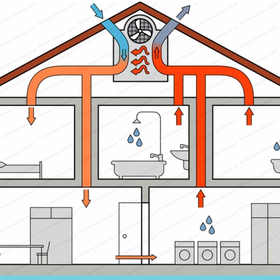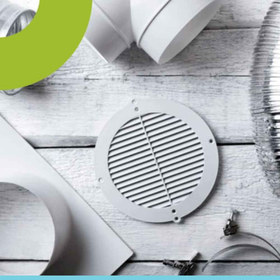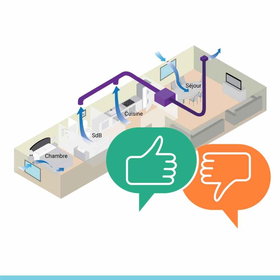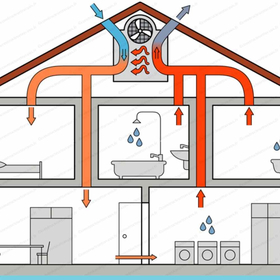The risks of poor ventilation in the house
The air inside the dwelling must be renewed regularly. Indeed, poor ventilation of the apartment or house degrades your interior and, more seriously still, presents risks to your health. Also the ventilation of housing is considered a necessity. Moreover, the regulations make it a legal obligation.
The need for good ventilation
You need to bring fresh air into your home. The operation must be repeated at regular intervals . This ventilation allows humidity to be expelled , which has a harmful effect on our health as well as on our homes.
If humidity is also present in our interiors, it is due to our daily activities. Cooking, for example, or bathing, generates humid air which, for lack of renewal of the atmosphere, becomes embedded in our walls.
If humidity is to be banished from our homes, too dry air also causes certain inconveniences , such as sore throats or migraines. Good ventilation is therefore above all a question of dosage.
Ventilation is not only ensured by the daily opening of windows. In winter, it is not always possible to keep them open long enough to renew the air in the home.
Do the regulations require the installation of certain ventilation devices, in the common areas of buildings, but also in apartments or houses?
In this regard, controlled mechanical ventilation, or CMV , is the best known device. Its role is to evacuate stale air from the dwelling to the outside and to introduce fresh air, which comes from outside. In short, the VMC maintains a balance between the arrival and the expulsion of air.
Some devices, sensitive to indoor air quality, are able to adjust the amount of ventilation. Thus, they will lower it if, by a reduced humidity rate, they detect the absence of occupants in the dwelling.
The VMC is mainly found in the most humid rooms, such as the bathroom, the laundry room or the kitchen. Of course, the proper functioning of this device depends on its regular maintenance.
You can maintain your VMC yourself, approximately every 6 months . A damp sponge may be sufficient to clean the vents of this device. You can even use a vacuum cleaner. However, to be truly effective, this maintenance must be entrusted to a licensed professional.
Dilapidated housing
The effects of poor ventilation on the condition of your home will soon be seen. Poorly ventilated housing is invaded by humidity that penetrates everywhere; it takes over walls as well as clothes.
If the house has been poorly ventilated recently, you will see a white deposit appear at the bottom of the walls . These whitish marks are proof that the humidity has started to eat away at your walls. Also called "stone salt", saltpeter is a variety of mineral salt, which also attaches to bricks or concrete.
Plaster or paint can also crumble under the action of saltpeter . This can also contribute to the detachment of the wallpaper or cause a malfunction of electrical appliances. It is therefore a real nuisance for housing.
Without sufficient ventilation, fog also invades your windows . In some cases, you even see water running down the windows. Such condensation will soon blacken the joints, along the sink or the tub, and cause the appearance of mold.
These molds, which are in fact tiny mushrooms, are also responsible for these blackish or colored spots that appear on the walls of poorly ventilated rooms, sometimes in long streaks.
These moulds, which appear everywhere, but even more so in humid and poorly ventilated places, attack walls as insidiously as saltpeter. They are also found on ceilings or around windows.
Too high humidity, linked to insufficient ventilation, leads to the appearance of yet another kind of fungi, which attach themselves to the wood of the floor, beams or furniture, when the roomwhere they locate is damp and poorly ventilated. These fungi, called dry rot , quickly degrade lumber or joists.
Molds and fungi therefore develop in humid and poorly ventilated environments. It is then imperative to ventilate the rooms of the house regularly, especially when the water vapor diffuses into the air of the dwelling.
This is the case, for example, when you take a shower or when you dry laundry in the house.
Health at risk
Poor housing ventilation has even more serious effects. Indeed, it does not only deteriorate the apartment, it also threatens the health of its occupants .
The presence of saltpeter and fungi in the apartment can cause respiratory diseases in its inhabitants, such as asthma, rhinitis and various allergies.
Daily exposure to such an atmosphere can cause certain chronic diseases, such as bronchitis . Of course, such adverse effects are felt even more in children. Living in humid and insufficiently renewed air can cause them to develop a chronic cough and lead, in the most serious cases, to pneumonia.
Likewise, the presence of certain very toxic molds, such as stachybotrys , which are frequently found in very humid interiors, potentially cause pulmonary bleeding in children. In some cases, prolonged exposure to this mold can be fatal to young children or pets.
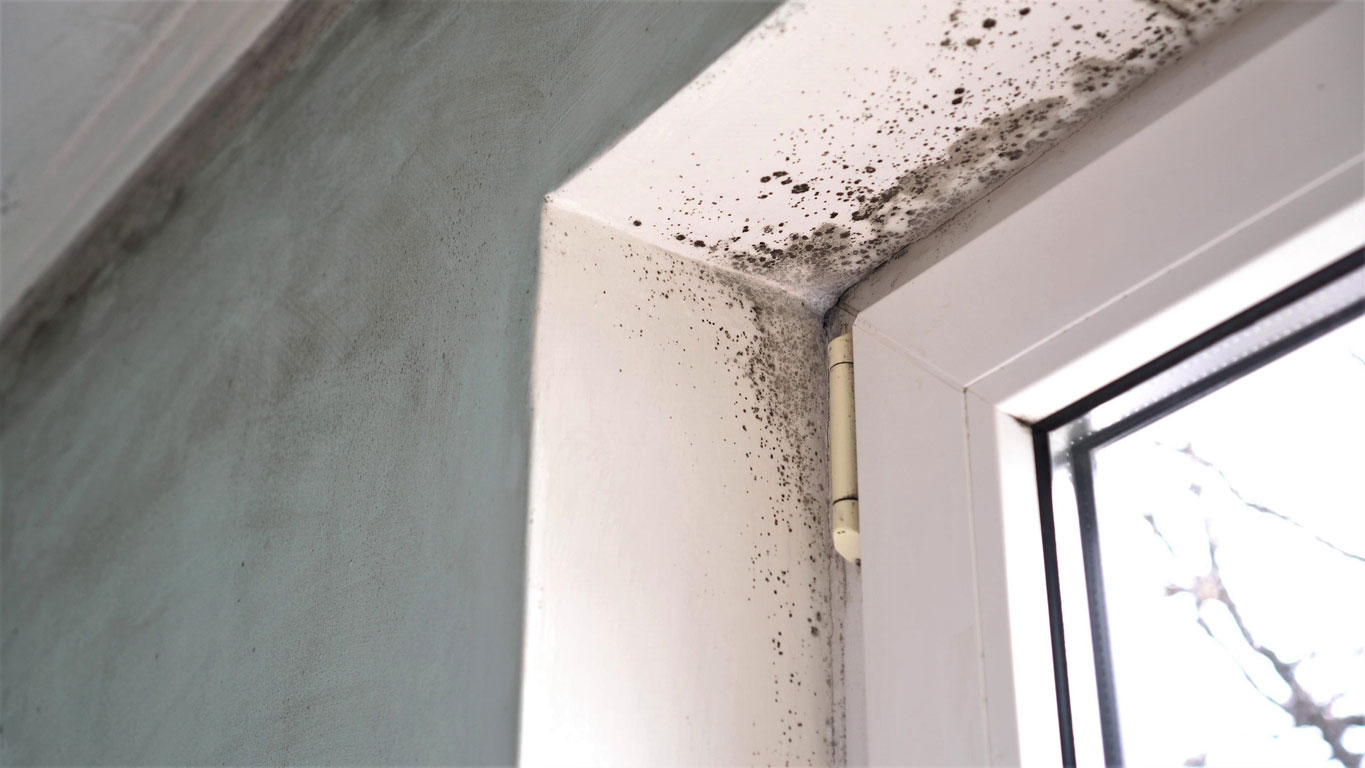
Thus, the presence of fungi, and the bacteria that accompany them, often leads to rashes. Thus, the occupants of the accommodation may experience eczema, hives, or other pimple eruptions .
Also, insufficient ventilation can leave too much carbon monoxide in the air. As we know, the fumes from this gas can be fatal. And it is all the more dangerous as it is an odorless and invisible gas.
But, in a poorly ventilated home, the heating appliances, especially if they are poorly adjusted, the water heater, but also simple cigarette smoke, can cause the emanations of this gas to float into the poorly ventilated house, which can, in the most serious cases, cause asphyxiation of the person breathing them.
This invasion of the air by carbon monoxide is accompanied by a certain depletion of oxygen. This can only degrade the air breathed by the occupants of the accommodation.
Without sufficient ventilation, other pollutants can seep into the stale air of your home. These pathogens spread more easily inside a house where the air is not sufficiently renewed. It can be dust or nitrogen dioxide, a gas that can cause respiratory problems.
The person who is exposed to it potentially develops asthma attacks or allergies. Wheezing or coughing fits are other possible consequences of exposure to nitrogen dioxide.
But this stale air can also promote the transmission of diseases such as measles, chickenpox or even tuberculosis. Prolonged exposure to the unhealthy air of a poorly ventilated house can even, along with other factors, promote the appearance of certain forms of cancer.
People living in damp, poorly ventilated homes may even experience what experts call sick building syndrome (SBS) . Exposed to this deleterious atmosphere, the occupants of the accommodation end up feeling headaches, nausea, dizziness and irritation of the eyes, nose and throat.
They also have fits of coughing and are sometimes overwhelmed by fatigue. What makes this syndrome special is that these symptoms are only felt inside the dwelling in question. Indeed, they fade as soon as its occupants are outside.




